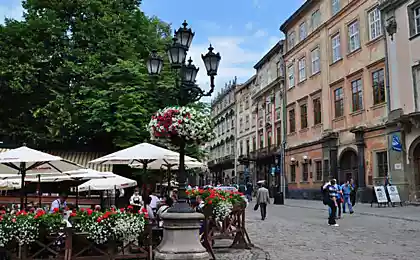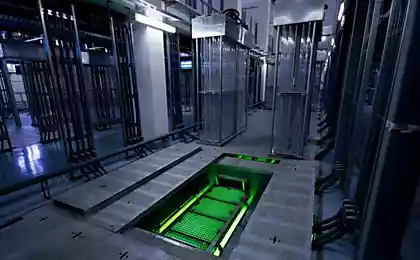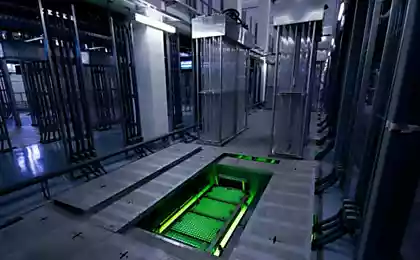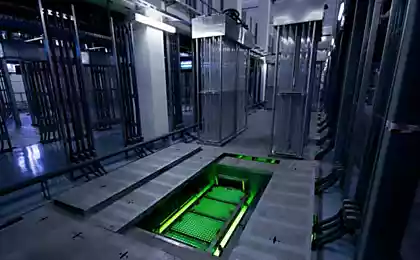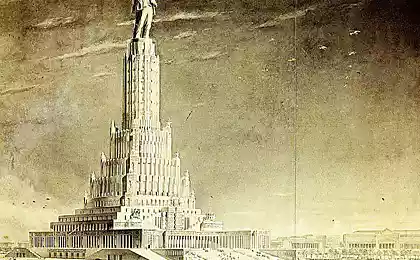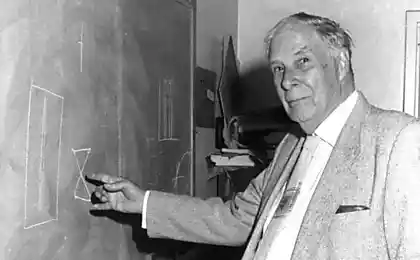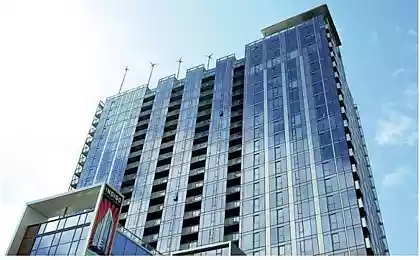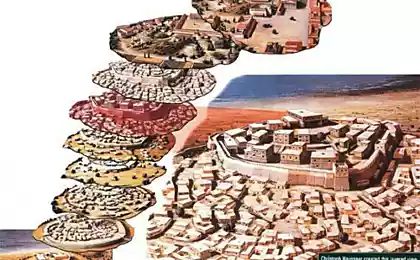235
4 Famous Buildings Built by People With Tragic Fate
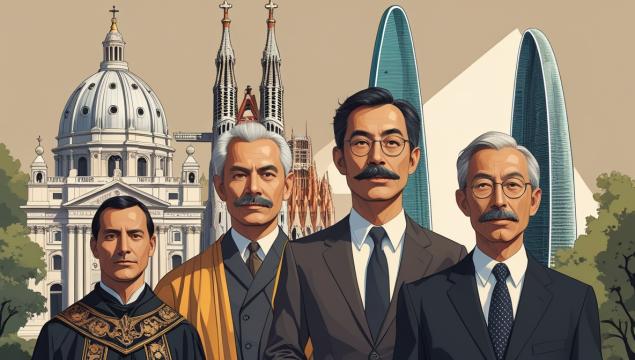
Magnificent buildings that delight us with their beauty and grandeur often become symbols of cities and even entire countries. They celebrate their creators, whose names are included in the history of architecture. However, the dazzling facades and graceful silhouettes of these masterpieces often hide the stories of people whose lives were overshadowed by misfortunes, non-recognition or tragic death. In this article we will tell about four outstanding architectural monuments, the creators of which, having given the world the beautiful, could not find happiness themselves.
Architecture is frozen music. But sometimes this music is born out of the deepest pain of its creator. And the greater the suffering, the greater the creation can be.
1. St. Peter's Cathedral in Rome and the tragedy of Donato Bramante
One of the main temples of the Catholic world, St. Peter's Cathedral in the Vatican, began to build the architect Donato Bramante. It was he who developed the initial design of the temple with a grandiose dome. But fate decreed that during the life of Bramante managed to build only the foundation and four massive supports of the dome.
Bramate was born into a modest family and fought all his life for recognition of his talent. He was commissioned to design the cathedral in 1506, when he was already in his sixties. This was the culmination of his career and at the same time the beginning of mental anguish. The project caused a lot of controversy, to implement the plan it was necessary to demolish the old basilica of the IV century, which many considered blasphemy. Bramante received the nickname "Ruinante" - "destroyer".
Donato Bramante died in 1514 when construction was just beginning. For the rest of his life, he watched as his design was criticized, and some elements of the design gave cracks. He did not see the majestic dome, which was completed only decades after Michelangelo's death, significantly changing the original design.
Bramante never had a family, giving everything to architecture. At the end of his life, he was plagued by illness and doubts that his grandiose project would be completed according to his plan. And so it happened - today we see a cathedral that is significantly different from the original plan of the master.
2. Sagrada Familia and loneliness by Antonio Gaudí

The Sagrada Familia in Barcelona is one of the most recognizable and unusual temples in the world, the construction of which has been going on for more than 140 years. Its creator, Antonio Gaudí, dedicated the last 43 years of his life to this project, abandoning other orders and practically settling on the construction site.
Gaudí was a deeply religious man and ascetic. Dedicated to architecture and faith, he never married. The only woman he loved turned down his offer. After that, Gaudí immersed himself in the work on the Sagrada Familia, which became for him not just a building, but a spiritual mission.
In the last years of his life, Gaudí lived in a small room right on the construction site of the temple, eating scantly, wearing worn clothes. He was often mistaken for a beggar, which eventually led to tragedy.
On June 7, 1926, when he was 73 years old, he was hit by a tram in Barcelona. Because of the unkempt appearance, passers-by mistook him for a vagrant and did not immediately provide assistance. When Gaudí was finally taken to the hospital, it was too late. He died three days later without seeing the end of his life’s work.
At the time of Gaudí’s death, the cathedral was only a quarter built. Sagrada Familia is still incomplete, although it is planned that the main works will be completed by 2026 - the centenary of the death of the great architect.
Lessons from the fate of Gaudí for modern creators
- Do not give up your personal life for the sake of a profession – balance is necessary for full creativity.
- Document your ideas and process – many details of the Sagrada Familia project have been lost because Gaudí kept them in his head.
- Find like-minded people and build a team – working alone on a large-scale project can be an overwhelming task.
3. Twin Towers and Unfulfilled Dreams by Minoru Yamasaki
The twin towers of the World Trade Center in New York have long been a symbol of the power of the American economy and modernist architecture. Their creator, American architect of Japanese origin Minoru Yamasaki, put all his knowledge and experience into this project. But fate decreed that his most famous creation befell disaster, although the architect himself had already died.
Yamasaki’s life was filled with difficulties from the beginning. Born into a poor family of Japanese immigrants, he suffered the brunt of racial discrimination, especially during World War II, when Japanese were sent to special camps in the United States. Yamasaki managed to avoid internment only by moving to the east coast.
The tragedy haunted not only the architect, but also his creations. Long before the events of September 11, 2001, another famous Yamasaki project, the Pruitt-Igow apartment complex in St. Louis, was deemed a failure and demolished in 1972, becoming a symbol of the collapse of modernist architecture in social housing.
The development of the World Trade Center project was not easy for Yamasaki. He developed an ulcer from the stress associated with the scale and complexity of the project. He suffered from aerophobia, which made it particularly ironic that he was designing the tallest buildings in the world.
Yamasaki died in 1986, 15 years before the tragic destruction of his most famous creation. The Twin Towers were designed with the possibility of a collision with an aircraft in mind, but no one could have foreseen the deliberate attack that took place on September 11, 2001.
4. The House Over the Falls and the Tragic End of Frank Lloyd Wright
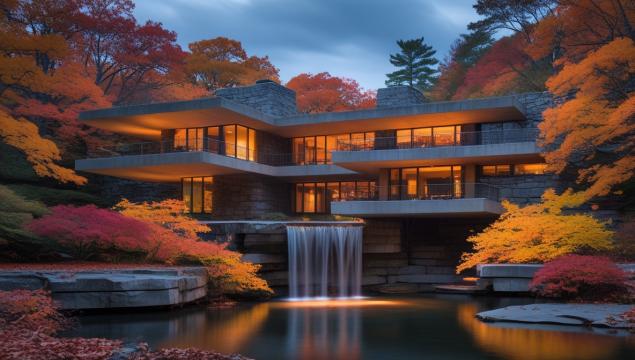
The house above the Fallingwater in Pennsylvania is considered one of the masterpieces of American architecture of the XX century. Its creator, Frank Lloyd Wright, designed a building that seems to be a natural extension of rocks and waterfalls, the embodiment of its principle of organic architecture. But the personal life of the great architect was full of tragedies that forever changed him and his work.
In 1909, when Wright's career was booming, he left his first wife, Catherine, and six children for Mama Cheney, the wife of one of his clients. This scandal has severely damaged his reputation. In 1914 there was a tragedy that haunted the architect for the rest of his life. A mad servant at his home, Taliesin, set fire to the building and killed seven people, including Mama Cheni and her two children, while Wright was away.
After this tragedy, Wright fell into a deep depression. “As an architect, I lost everything: my lover, my house, my job. I was near the abyss, but something made me move on, he later wrote.
Despite, or perhaps because of, personal tragedies, Wright created some of his best work in his later years. The house above the waterfall, designed by him at the age of 67, became a symbol of the architect’s rebirth after a decade of relative oblivion, when many considered his career over.
Interestingly, although today the House over the Falls is recognized as a masterpiece, its design initially caused concern. Console balconies overhanging the waterfall began to sag immediately after construction. In 2002, the house had to be closed for extensive renovation to prevent its collapse.
How to deal with tragedy in the life of a creative person
- Turn Pain into Creativity – Many Great Works of Art Are Born out of Suffering
- Don’t be afraid to start over – even after the hardest losses, you can find the strength for new achievements.
- Build a supportive community around you – surviving a tragedy alone is much harder.
- Remember that time heals – Wright created his greatest works years after personal tragedies
Conclusion
The stories of these great architects remind us that behind every great building stands a man with his own joys and sorrows. Creative genius does not guarantee a happy fate - sometimes it seems that great works are born precisely because of the suffering of their creators.
Today, looking at these majestic buildings, we admire not only their architectural merits, but also the strength of the spirit of people who were able to overcome personal tragedies and leave behind something beautiful and eternal. Their stories teach us that even in the darkest of times, you can find the strength to create something that will outlive us and delight people for generations to come.
Glossary of architectural terms
Modernism is a trend in the architecture of the XX century, characterized by the rejection of historical styles, the use of new technologies and materials, the desire for functionality and minimalism.
Organic architecture is a philosophical direction in architecture, founded by Frank Lloyd Wright, implying a harmonious combination of the building with the environment, the use of natural materials and forms.
The console is a protruding part of the structure (beam, stove), fixed only at one end and working on bending. Allows you to create the effect of soaring parts of the building in the air.
A dome is a spatial covering of buildings and structures, in shape close to the hemisphere or other surface of the rotation of the curve line.
Modernist Tower is a high-rise building designed in accordance with the principles of architectural modernism: functionality, lack of decor, the use of modern materials (steel, glass, concrete).
Neo-Gothic is an architectural style that arose in the middle of the XVIII century in England and represents a revival of medieval Gothic architecture.
What and how do you know about the reality you live in?
The role of stickers in commodity branding and logistics
